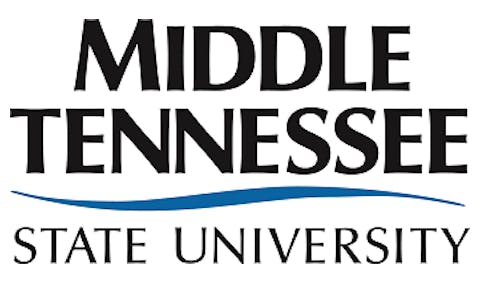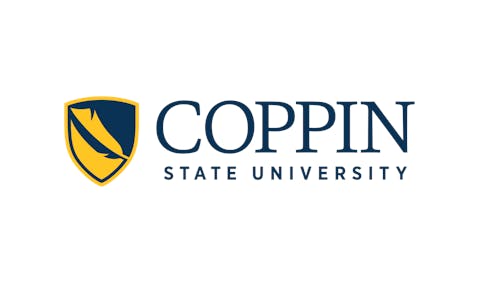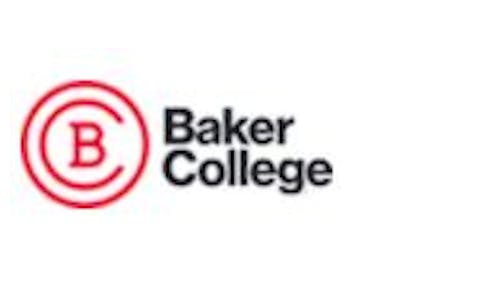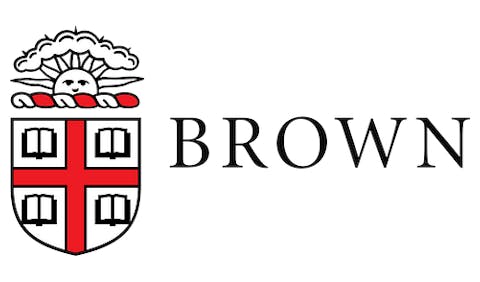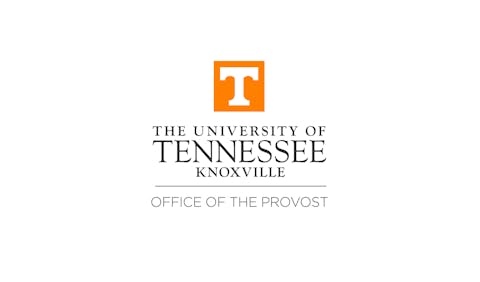Alabama’s all-but-level higher education playing field is a case
study in what’s wrong with higher education’s commitment to equity and
diversity
Two months ago when the Southern Education Foundation released the
findings of its latest report, Miles To Go, it sparked widespread
pandemonium among those concerned about the fate of minorities in
higher education.
The foundation reported that the nineteen states that once operated
dual systems of higher education have made little progress in
guaranteeing educational opportunities for African Americans, even
alter more man thirty years of court-ordered “affirmative steps.” The
report’s grim statistics highlighted state-by-state inequities
characteristic of the South’s separate and unequal educational
opportunities that still exist today.
“It’s not a popular issue in the South, not because people are
walking around as pointy-headed racists anymore, but because they’d
rather ignore it and hope it will go away,” said the study’s author,
Robert Kronley. “But the evidence shows that we’re nor going to be able
to close our eyes and will these problems away.”
At the heart of the nation’s struggle to dismantle the effects of
segregation in higher education is the state of Alabama. Deep-South
that it embodies, this bellwether state, with its forty-eight colleges
and universities, typifies the lack of headway the states have made in
leveling the playing field.
This is the state where thirty-five years ago, then-Gov. George
Wallace made his famous “stand in the school-house door.” On the
surface, it was a physical attempt to prevent the University of
Alabama’s first two Black students from attending. Symbolically, it
illustrated the state’s contumacious resistance to integration.
Today, Black students still don’t have comparable access to the
state’s “flagship” colleges. Majority White public institutions set up
shop and duplicate programs just minutes from historically Black
schools and nearly 75 percent of Black students attending public
institutions still remain at two-year and historically Black
institutions.
It is in this land, where confederate flags wave ominously from
roof tops, that the cost of college tuition equals more than 10 percent
of the average Black family income.
Alabama, with all its men of good will and altruism, epitomizes the unlevel playing field.
Knight v. Alabama
De jure segregation in higher education officially ended in the
South in 1972, when a court order in the Adams case mandated that the
states cease from continuing these practices and policies. The court
also required each state to submit to the United States Education
Department a plan to desegregate its public colleges and universities.
Alabama’s plan was rejected and forwarded to the Department of Justice.
On January 15, 1981, Montgomery attorney John F. Knight, and
others, filed a lawsuit in the Middle District of Alabama contending
that segregation was part of an official state policy of White
supremacy in higher education. The policy was enforced, according to
the plaintiffs, with negligible endowments, discriminatory funding
practices, restricted missions for some universities, program
duplication, limited integration of HBCUs, and White control over
public education for Blacks, among other things.
Two years later, Alabama State University and Alabama A&M
University — the state’s two historically Black universities — joined
the U.S. government in a similar suit. The courts found in favor of the
plaintiffs in U.S. v. Alabama in 1985.
But the state appealed and in 1987, portions of the plaintiffs case
were dismissed in U.S. v. Alabama. The cases were then combined with
Knight’s lawsuit and the litigation became known as Knight v. Alabama.
In 1991, U.S. District Judge Harold S. Murphy issued an 840-page
court order. After ten painstaking years of listening to the testimony
of some 200 witnesses and perusing 20,000 pages of transcripts, Murphy
ruled that the vestiges of de jeru segregation had indeed impeded the
progress of Black students in the state. He determined that — among
other things — the state limited the scope and missions of the two
public historically Black schools and limited Black enrollment at the
flagship schools through admissions standards.
Murphy ordered several state schools to hire more Black faculty and
administrators. He also mandated an endowment be set up at the two
HBCU’s — Alabama State University and Alabama A&M University. As a
result, both schools received extensive capitol improvement funds to
upgrade their facilities. Both schools also established new graduate
and Ph.D. programs. The judge then ordered Alabama A&M and Auburn
University — the state’s two land-grant schools — to unify their
cooperative extension programs.
Widely perceived as a win for Black Alabamans, those concerned were
generally happy that the decree force changes no one believes the state
would have made on its own.
“It is because of the decisions of the court, not because of the
state having some epiphany and saying `We need to do this,'” said Dr.
Bill Harris, president of Alabama State University of the improved
funding and other mandates. “Without the decision of Knight, there
would have been no more funding for Alabama State University other than
what we would have gotten out of what is a clearly unhelpful attitude
about higher education in the state, period.”
While most folks agree the court order will mean real improvements,
there’s an overriding consensus that Murphy, who had repeatedly urged
the two sides to settle, tried too hard to please everyone.
“Nobody wanted this to go on for years and years of appeals and
further litigation,” said Alease Simms, another plaintiff in the case
who hoped for other edicts such as flagship status for A&M — her
alma mater. “Judge Murphy tried to please everyone and didn’t end up
satisfying anyone.”
And Dr. Richard Carpenter, who presides over Calhoun State
Community College in Decatur, says, “The Knight case is still going on
after almost twenty years. It diverted half a million dollars in legal
fees. I think it richly educated the children of our attorneys.”
The amount to which the decree will enhance educational
opportunities for Blacks in the state is yet to be seen. So nearly
eighteen years after Knight first brought his lawsuit, and twenty-six
years after segregation supposedly ended in Alabama, wrinkles are still
being ironed out in the furrowed case that is an attempt to right the
wrongs of the Wallace era.
The following article continues the first half of this two-part
series that examines the tangible impact the past three decades of
struggle in Alabama have had on African American students, faculty, and
administrators in the higher education community there, The article
focuses upon the consequences felt by students. Part two, which will be
featured in a future edition, will examine the effects Alabama’s
unlevel higher education system has had on faculty, administrative
staff, and institutions.
RELATED ARTICLE: Beneath the Veneer
Understanding the depth of disparity in the educational
opportunities available to Alabama’s Black and White students requires
looking beyond the surface
Whenever Auburn University has a home football game and is playing
one of its classic rivals, Louisiana State University, bets are it’s
the only show in town. Hotels are booked weeks in advance, traffic
backs up on Auburn’s Interstate-85 and Tiger spirit filtrates this
eastern portion of the state.
The traditionally White institution (TWI) kicked off this season
against Louisiana State to a capacity crowd of 85,212 at the
Jordan-Hare Stadium. And as seventy Black Tigers — nearly half the
team — stepped onto the field wearing blue and orange, unwitting
viewers might have assumed that the state’s flagship university has a
similarly integrated, desegregated campus.
Nothing, however, could be further from the truth.
Visitors to the Auburn campus on a business-as-usual school day
will encounter an environment where only 6 percent of the more than
21,000 students — graduate and undergraduate combined — are African
American.
To the northwest of Auburn is the University of Alabama in
Tuscaloosa. It reports that 12 percent of its student body is Black.
Its powerhouse sister campus in Birmingham has filled 23 percent of its
slots with Black students. Troy State University in Dothan has a 12
percent Black student population. And the University of Montevallo,
named after its host city, is at 11 percent.
In short, while some state universities are doing better than
others, Black Alabamans largely do not have access to the prestigious
public institutions their tax dollars support.
And where Black students do abound, so do underfunded facilities
and limited programs. The state’s two historically Black schools —
Alabama Agricultural and Mechanical University in Huntsville, and
Alabama State University in Montgomery — are handicapped by a state
traditionally apathetic to fostering educational opportunities for
African Americans.
Further, a whopping 51.3 percent of African American students at
Alabama’s public institutions are at community and technical colleges.
Less than 15 percent of bachelor’s degree -earners in Alabama’s
public institutions are African American. And Blacks represent 31.6
percent of the state’s eighteen-to-twenty-four-year-old population, but
only 25.1 percent of first-time, full-time freshman at state schools.
Alabama — where the average Black family income is less than
$20,000 — has 220,000 college students but ranks fourteenth out of the
fifteen Southeastern states in the amount of money it provides for
scholarships.
In addition, southern states distribute more than one-third of all their financial aid without consideration of need.
It was recognition of these and other staggering statistics that
prompted the lawsuit, Knight v. the State of Alabama, which resulted in
a 1991 decree forcing the state to further integrate its traditionally
White colleges and universities and fortify the two Black institutions
as well.
Many people, the defendants included, think implementing the decree will help.
“I think this lawsuit will go a long way in terms of addressing
some of these issues,” says John Knight, the lead defendant in the case.
However, most agree that Alabama has — like the title of a recent
dismal report by Atlanta’s Southern Education Foundation — miles to go
before it achieves a level playing field.
The TWIs
The University of Alabama-Birmingham has covered the most ground in
the state when it comes to raw numbers and percentages. In addition to
its large total student body proportion, African American students make
up 32 percent of the university’s freshman class. Indeed, out of all
Carnegie I institutions nationwide, this institution has the third
largest percent of African American students.
Although it’s been suggested that is not a particularly impressive
feat in a city where Blacks are almost 75 percent of the population,
school officials say their success has not been painless.
“The actual city of Birmingham is heavily African American, but the
larger area has a White majority,” says Dr. Ann Reynolds, the
university’s president. “Our faculty has worked very hard at various
programs aimed at bolstering minority participation.”
The programs Reynolds refers to are extensive. They include several
designed to encourage, mentor, and finance Black youth who want to go
into the medical field, in which the university has a massive
curriculum and vast connections.
Reynolds also points out that half the campus residents are African
American, and that Black students play an active role in campus life.
“When you have a campus ripe with Black fraternities and
sororities, Black students who participate in student government and
other campus organizations, it’s bound to get around,” Reynolds says.
“We are very aware that for us to have this major African American
population is a word-of-mouth issue…. We are always working with
people to think about more programs and more initiatives.”
However, Dr. James C. Brown, says he takes no delight in Auburn University’s racial make-up.
“Auburn is very much concerned about the number of African
Americans participating” in educational advancement at the university,
says the school’s assistant to the president for minority advancement,
noting that a recent change in out-of-state tuition caused a slight dip
in what had been an increase over previous years.
“All schools in this region are competing for the African American participants. It’s all about competition,” he added.
One of the schools Auburn competes with in this region is Tuskegee
University, which duplicates Auburn’s science and engineering programs.
Though classified as private, Tuskegee was first started by the state
of Alabama, and continues to receive a some state support.
Brown says that Auburn — which is just minutes from historically
Black Tuskegee University, and has less than a 50 percent retention
rate for African American students — participates in several programs
to try to boost minority participation. For example, his office works
closely with enrollment management to recruit and augment pipeline
programs. Auburn invites HBCU undergraduates to their campus to court
them to the school’s graduate programs. The university also
participates in the National
Consortium for Educational Access, which promotes increased
production of Black Ph.D.s; and the National Science
Foundation-sponsored Alabama Alliance for Minority Participation, which
recruits minorities in the field of engineering.
This Research II institution heavily steeped in math and science
really does want — at least theoretically — to encourage Black
participation in higher education, Brown says. It’s just that it takes
more than soupy sentiments and getting involved in various programs.
“Any institution that develops a systemic initiative must have
institutional commitment,” he says. “Institutional commitment is
dollars.”
Brown, who works with a roughly $200,000 budget, says his efforts
will never be enough if he doesn’t have the money to back them up.
Further impeding his efforts are people within the institution who
still haven’t gotten with the program.
“All institutions have cultures,” Brown says. “And within those
cultures, what you must be able to do is try and get people to
understand how to go about developing these kinds of initiatives.”
As for the students, many of the Blacks at Auburn say they feel
relatively comfortable, though not at home. Several reported racial
slurs hurled at them a few years back, but said they felt the
university was making a conscious effort at conciliation. Recent campus
programs that have included a Def Comedy Jam concert, which one student
says may seem trivial, but is the type of event that helps Black
students feel more welcome.
It doesn’t sound trivial to Northwestern University sociologist Dr.
Aldon Morris, who testified as an expert witness for the plaintiffs in
the Knight case.
He visited Alabama’s colleges and universities to prepare for his
deposition. He found that although Jim Crow laws were no longer in
place and some of the colleges had even taken great strides to
physically integrate their student populations, some very key factors
had been neglected.
“It was my observation that the Black students at the predominantly
White institutions had a very isolating experience,” he says. “Their
culture and heritage were not encompassed within the newly integrated
institutions.”
Morris found the opposite to be true at the historically Black
institutions. He also found that White ascendancy colored the state’s
pattern of according prestige, resources, and programs to its higher
education institutions.
“It was so clear,” says the author of Origins of the Civil Rights
Movement. “The predominantly White institutions had the flagship
status, the largest budgets, the graduate programs. The Black
institutions were clearly second-class.”
The HBCUs
Judge Murphy must have been swayed by the appeals of Morris and
others because he ruled extensively in favor of initiatives to
strengthen the two state-supported HBCUs.
Both will add new state-funded programs to their curricula. Alabama
State will take on two undergraduate programs in occupational therapy
and health information management; two graduate programs in physical
therapy and business; and two Ph.D. programs in education and
microbiology.
“Those programs will result in a considerable amount of additional
funding for the university over the next couple decades,” says Dr. Bill
Harris, president of Alabama State University. “And in the case of the
allied health sciences — occupational therapy, physical therapy, and
those programs — we’re gonna get a new building.”
Harris says that what his university will get as a result of the
Knight case gives him and Alabama’s youth a lot more with which to work.
“That allied health sciences program changed the options for a
whole large number of people who never would have had that option at
the university,” he says. “Black young folk and White young folk have
an opportunity now for careers that were not available before.”
Dr. John Gibson, president of Alabama A&M University, says the
mandate will be significant for his university as well. He’s just
disappointed that “it took a decree to provide us what we should have
had 123 years ago.”
What A&M will get is a fully-fledged engineering program —
something Gibson says that as a land-grant institution, they should
have had long ago.
One stipulation of the decree, however, is that the Black schools
make an effort to attract White students. They will both be reimbursed
up to $1 million annually for scholarships given to White students. And
while the mandate was devised to eliminate perceptions of inferiority,
it interestingly has some students and administrators grumbling over
the fact that White students can get into the universities with lower
grade point averages than their Black counterparts.
Others worry the two will lose their focus of educating Black students. Gibson assures that won’t happen while he’s in office.
The Community Colleges
One person who is not so disappointed that slightly more than half
the Black students in Alabama’s public institutions are at community
colleges is Joe Reed.
“Everybody does not have to have a bachelor’s degree to be successful,” he says.
“I think that one of the mistakes that we Blacks have made over the
years is that we have down-played the contribution community colleges
have made to our communities.”
“The community colleges in Alabama are the first-choice schools of
many students,” says Dr. Fred Gainous, who presides over the state’s
two-year college system.
Dr. Richard Carpenter, president of Calhoun State Community College
in Decatur, adds that Alabama’s community colleges provide a
convenient, affordable higher education access point for many of the
state’s African American students.
“If some people are disappointed that half the Black students are
at community colleges, I’m disappointed we’re not getting more of
them,” Carpenter says. “It just makes more sense for many students to
do their first two years of college at a community college.”
Dr. Johnny Harris, president of J.E Drake State Technical College in Huntsville, agrees.
“If we’re doing a better job of providing educational opportunities
for African American students, I’m glad,” he says. “At community
college, they can acquire skills which help them gain access to jobs
which can help them finance the education the state doesn’t seem to
want to do.”
His institution has a 48 percent Black student population.
Black students constitute slightly fewer than 20 percent of
Calhoun’s student body, and Carpenter says he’s very pleased with that
number.
“We are one of the few institutions in this state that can say that
the percent of African American students is the same as their
population in our surrounding community,” he says. “We drink that’s
pretty good.”
RELATED ARTICLE: If I Was Judge Murphy …
Just about each and every higher education official in the state of
Alabama was impacted by the state’s desegregation lawsuit. And most of
these officials have an opinion on what they would have included in
presiding Judge Harold Murphy’s decree. The following are a few
examples:
“If I had my way, I would have done it differently. I would have
disallowed Troy State to operate in Montgomery at all. I would have
made Auburn University at Montgomery a liberal arts undergraduate
school only. Then I would have allowed Alabama State to take all
liberal arts and graduate programs. That’s what I would advocate” —
Joe Reed, president, Alabama Education Association
“If you were to ask me if we got from the court the best that we
could have gotten, the answer is no. When we developed our whole plan,
we developed a very different university that would have professional
schools of law, of pharmacy for example…. We think that there is a
need for a law school in the central part of Alabama that is public —
we don’t have one. But the court determined that the state could not
afford it and he wouldn’t order it. I still think that there ought to
be a pharmacy school, but then reasonable people disagree.” — Dr. Bill
Harris, president, Alabama State University
“The decree elevated the salaries of the extension employees at
Auburn University, but we were not able to raise salaries for our
faculty.” — Dr. John Gibson, president, Alabama A&M University
“The pennies we got from the decree do not begin to compensate for
100-plus years of discrimination when we didn’t get any money. In 1875,
our portion of the state budget was $1,000.” — Alease Simms, a
plaintiff in the Knight case and A&M alumna
“I could sit here and find fault with everything Murphy’s done. He
could have done a better job, but when you look at the big picture,
it’s really hard to complain.” — Jim Blacksher, lead attorney for the
plaintiffs
COPYRIGHT 1998 Cox, Matthews & Associates
© Copyright 2005 by DiverseEducation.com










